Focal

Points Sierra Club Camera Committee Magazine October 2022
Cover
EightEight-Legged Musk Ox Somewhere near Out There Alaska
©2022 Paul Reinstein,

Focal Points Magazine
Published monthly by the Angeles Chapter Sierra Club Camera Committee, John Nilsson, Editor. Questions and comments can be directed to John at 213-266-2224 or FocalPoints.sccc@gmail.com
2 Contents 4. Cover Story 14. Meetings and Outings 18. Joe's How-To 26. Member Photos 64. Black and White Pages 74. Contributors' Bios 88. Notes and Announcements 94. Photo of the Month 98. Parting Shot
2
Photo Credit: Focal Points Magazine Paul Reinstein
All Rights Reserved
Notes from the Chairman
At a conference three years ago I got into a heated discussion with a prominent fine art photographer. It became a bigger deal than I intended. I won’t restate his position, but mine was quite simple. Photography is a communication medium, and if communicating your ideas and emotions isn’t your principal aim, what exactly are you doing?

The more I recall that panel the more mistaken I think he was. You can’t develop your artistic vision in isolation. You need to know if people are hearing what you are saying. The majority doesn’t have to accept it or even value it. It’s often enough that one person sees your work and gets it.
That is one reason I’m a fan of this publication. Focal Points Magazine is a venue for us to share our work with each other, work that we might never be aware of otherwise. We are inundated with photos on social media, but they don’t land with the impact of photographs selected for and laid out in a magazine (even a virtual one). Which is why I’m grateful to the photographers who make regular contributions here, and who share their work with all of us. It’s a commitment of time and energy, and I appreciate it. And it’s why I encourage all of you to take an hour out of your day to submit to the next issue. Since our meetings went virtual we’ve lost some channels of communication. Let yourself communicate through this one.
- Joe Doherty
3 Leave nothing but footprints, Take nothing but pictures, Kill nothing but time. 3
Cover Story:An Alaskan Saga
by Paul Reinstein
All Photos©2022 Paul Reinstein, All Rights Reserved
I shoot wildlife, mostly birds, with a camera. A few years back, my friend, Frank, asked me if I would be interested in a trip to Saint Paul Island, in the middle of the Bering Sea off the Alaskan coast. At the time, I had a trip to the Falklands planned, and I just couldn’t swing both in the same year, so I took a pass. But then Covid came and wiped that trip off the map, and the next two years were, well, you know. But this year, I felt like a coiled up snake, ready to strike out anywhere, and St Paul came to mind so I contacted Frank and the guy he had recommended, Bryan Holliday. Bryan had threee back-to-back tours planned, Nome/Barrow/StPaul, so, really ready to ditch town, I signed up for all three! I was eager for an adventure.
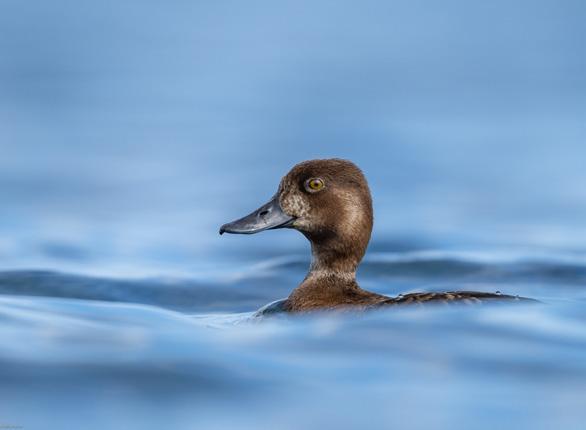

Barrow in particular called out to me as a challenge that I needed to put under my belt while I can. That leg of the trip involved hiking possibly one mile, over tundra and through some large three-foot deep ponds filled with ice water, the bottoms of which are still frozen. Add the occasional polar bear a mile from the car, unending daylight, albeit cloudy or rainy, and what’s not to like!
Each leg of the trip was out of Anchorage, and I met up with Bryan and my fellow travelers at the airport on our way to Nome. Nome has long history of dredging for gold, and there was dredging equipment everywhere. They dredge for gold in the lakes, in the rivers, along the shore and in the Bering Sea itself. It felt like this was a place where old heavy equipment went to rust and die, but a few become resurrected in some Mad Max dystopian way, forming
Red-necked grebe
Lesser Scaup
4 4


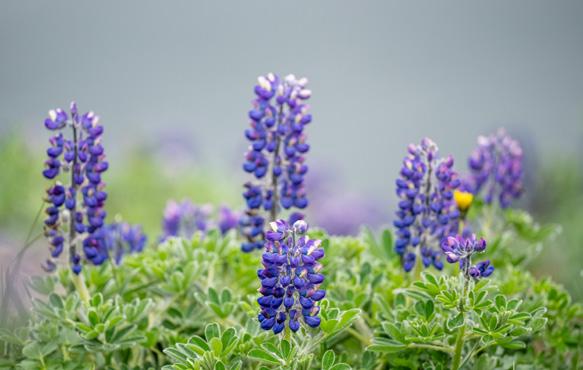


 Reindeer
Common Eider - We couldn't get near these guys - talk about shy!
Lapland Longspur
Black-billed Magpie, mama coming in to feed junior
Rock Sandpiper
Lupine
Reindeer
Common Eider - We couldn't get near these guys - talk about shy!
Lapland Longspur
Black-billed Magpie, mama coming in to feed junior
Rock Sandpiper
Lupine
5 5


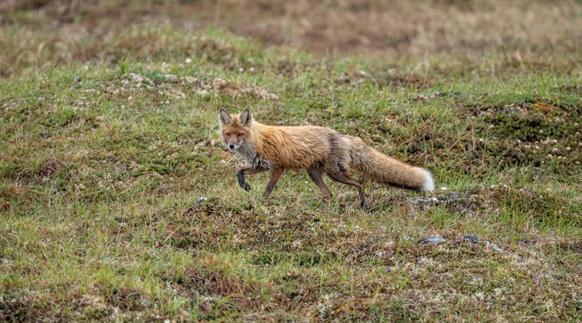


 Least Auklet
Musk Ox
Red Fox
Parakeet Auklet
Northern Fulmar
Where the birds are
Least Auklet
Musk Ox
Red Fox
Parakeet Auklet
Northern Fulmar
Where the birds are
6 6
new dredges, and leaving the carcasses of the old equipment on the sides of the road. It's also the end of the road for the Iditerod, the dogsled race from Anchorage to Nome.
There are three roads out of Nome and basically, each day we took one of them. There are no facilities outside of Nome at all. We saw many species, but, frankly, the number of each species just wasn’t as great as I was expecting, and the locals confirmed that the area had come up short of the normal rainfall for three years running, so their numbers were in fact down. It looked pretty wet to me.
The first species we stoopped to shoot was a Red-Necked Grebe in town. In addition I found a Willow-Ptarmighan. In winter the Willow-Ptarmigan is all white, molting to summer's brown specked patterns. It had the best bird call I've ever heard. You can hear it, and the other bird calls, if you search at

https://www.audubon.org/field-guide/bird
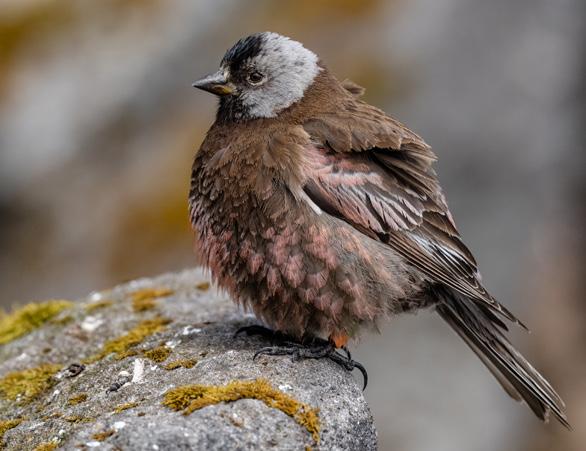
In this artical are some the other birds and mammals we saw in and around Nome.

 Willow-Ptarmigan
Black-bellied Plover - No yellow, this is a bird we have here in So Cal, but not dressed like this
Grey-crowned Rosy Finch
Long-tailed Jaeger
Willow-Ptarmigan
Black-bellied Plover - No yellow, this is a bird we have here in So Cal, but not dressed like this
Grey-crowned Rosy Finch
Long-tailed Jaeger
7 7
After Nome, we returned to Anchorage, and the next day headed up to Barrow. For unexplained reasons, the pilot decided he could not land, and within sight of Barrow, he turned around and took us back to Anchorage. While I was disappointed, it turned out to be a mixed blessing. I had been having a little congestion, which I chalked up to going in and out of cold and wet weather. But the morning after we returned to Anchorage, I felt worse, so I tested myself, and discovered Covid had finally caught up with me. Bryan and my fellow travelers took the next plane to Barrow, while I spent the week quarantined with a very mild case. Before the hotel read me the riot act, I snuck out to shoot some birds near the hotel.

The ER I visited to see if I could get anything to lighten the effects of Covid and/or speed up my recovery was great. I got monoclonal antibodies and Molnupiravir and within 48 hours, all my symptoms were gone.


 Horned Puffin
Wilson’s Snipe (My father used to tease me that he’d take me snipe hunting. Guess who’s laughing now!)
Snow Bunting
Simi Palmated Sandpiper
Horned Puffin
Wilson’s Snipe (My father used to tease me that he’d take me snipe hunting. Guess who’s laughing now!)
Snow Bunting
Simi Palmated Sandpiper
8 8
Finally, with my symptoms plus seven days of quarantine behind me, I rejoined Bryan for the St Paul Island leg of the trip. St Paul generally requires a negative Covid test before flying there because it is so isolated and such a small community, but the gatekeeper listened to my story, understanding that I could be long over it and still test positive for months to come, and allowed me in. No one got sick from me, as far as I could tell. Getting there was (as luck would have it) easy. Getting home, was much more difficult. We flew in on a Sunday, and the flights in/ out of St Paul during most of the rest of the week were cancelled due to weather. Because of the cancellations, the airline added a Friday flight. That is what we decided to leave early by taking this flight, since it seemed unlikely that Sunday’s would make it.
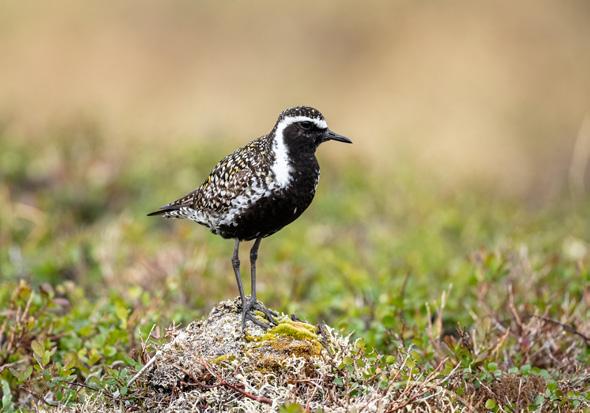


The weather in St Paul, in late June, was cold, wet, cloudy, windy, misty, foggy and in terms of photography, dismally dark. In other words, close to perfect. I recommend retiring before you go there because you may not make it back in time to return to work on schedule. The roads were gravel and bumpy, and the van we were in, rattled so loudly I could not hear any of the conversation around me. The food was reheated meals that they ship in from Anchorage The airport also serves as the hotel and the mess hall. They don’t want visitors mingling with the locals in order to minimize the chances of spreading Covid.
 Tufted Puffin
Arctic Fox - In Summer Garb
Pacific Golden-Plover (Note the yellow feathers on its back)
Tufted Puffin
Arctic Fox - In Summer Garb
Pacific Golden-Plover (Note the yellow feathers on its back)
9 9
The workshop group provided three meals a day, with wildlife viewing/shooting in between. The guide, a young and smart guy named Sulli was all part of the package, and drove us to all the sites. The birds there included both Tufted and Horned Puffins, which completed my suite of puffins. Also of note were the Red-faced Cormorants and several species of Auklets. It was mostly clifftop shooting, with some tundra shooting, beach, and a rock quarry, where we had our only two hours of sunshine while I was there. In June, the island is covered in flowers, which fade to grey in the misty conditions. Although the island is of igneous origins, it's a type of rock that weathers easily and the all the peaks are worn down to rolling hills. They provided 3 meals a day, with wildlife viewing/ shooting in between, and the guide, a young and smart guy named Sulli, drove us to all the sites, all part of the package.
On the way home, the airline (temporarily) lost my camera bag, my binoculars’ front element got a divot in it (thanks TSA), I lost my good pocket knife and my favorite wool hoody disappeared. All part of the cost of doing business with adventure.

If you’re interested in seeing more species, in higher res, and many shots of each, feel free to visit my Flickr page, https://www.flickr.com/photos/preinstein54/albums/72177720301831440
Editor's Note - Paul has written a long version of this story (with more great photos) that is quite entertaining and of interest to anyone wanting to follow in his steps through Deepest, Darkest, Alaska.
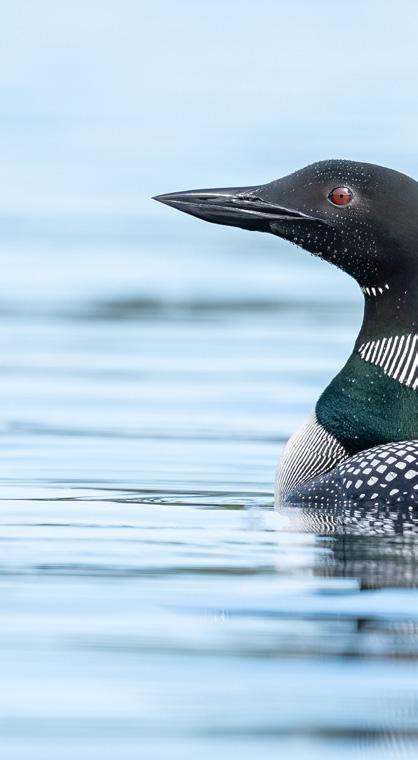
The article is available by clicking this link:
https://issuu.com/johnnilsson9/docs/alaska_trip_report
Paul Reinstein
Common Loon
Red-Faced Cormorant
10 10


 Savannah Sparrow
Savannah Sparrow
11 11
12
13 Meetings and Outings
Meetings and Outings
Sierra Club Camera Committee
13, 2022 Meeting
Our National Monuments, America's Hidden Gems
Photographer QT Luong will discuss his stunning new book of photographs, Our National Monuments: America's Hidden Gems (Terra Galleria Press, 2021). He is a photographer, author, environmentalist, and a technologist known for being the first to photograph all 63 US National Parks - in large format.

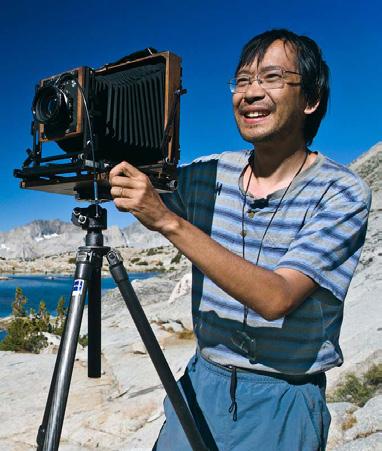
Luong is the author of the best-selling and acclaimed photography book about the nattional parks, Treasured Lands, third edition (Terra Galleria Press, 2022), and has hiked and camped in the land based national monuments under review.
Links to information for both books: https://ournationalmonuments.com/ https://www.treasuredlandsbook.com/
America’s Hidden
In
Register in advance for this meeting:
https://us02web.zoom.us/meeting/register/tZArcuqvrT 4uE90UZiN7bV2flPvQHBL3F8sp
After registering, you will receive a confirmation email containing information about joining the meeting.
The first photography book about the landscape-scale national monuments, and travel notes for each photograph
14 14 Where: In the comfort of your own home via Zoom When: 7:00 PM What: Our National Monuments:
Gems -
Large Format
-Thursday, October
QT Luong
Born in Paris, France to Vietnamese parents, I was originally trained as a scientist (Louisle-Grand, Ecole Polytechnique X84, PhD University of Paris), and made fundamental contributions to the fields of Artificial Intelligence and Image Processing, detailed in The Geometry of Multiple Images.
In the mid 1980s, my life was transformed by the wilderness of mountains. As a climber, and then mountain guide, I was initially interested in photography as a means to communicate to people who weren't there the wonders I had seen on the high peaks of the Alps.
This participatory approach to photography continued with travels, which have taken me to natural and cultural destinations on five continents. I am fortunate to have experienced an immense geographic range, from climbing the summit of Denali in Alaska, to scuba diving under tropical seas.
In 1993, another turning point happened. Attracted by the proximity of Yosemite's famous cliffs, I found my way to the University of California, Berkeley for what was originally planned as a short stay. There, inspired by the rich tradition of American landscape photography, I learned to use the large format camera. As I fell in love with the diversity of the national parks, I set out for a monumental nature photography project that had not been completed by anyone: photographing all of them in on large format film. I made my home in the San Francisco Bay Area. Years of outdoor adventuring experience proved useful when exploring the backcountry of many parks, occasionally hiking in trail-less terrain with a 70-lbs backpack, paddling kayaks and canoes during extended expeditions.
In the summer of 2002, when I visited Kobuk Valley National Park in Arctic Alaska, I was probably the first to have photographed the (then) 58 national parks. I continued this streak through the 63 national parks and remain the only person known to have done so with a large format camera. In the early 2000s, I had added a full-frame digital cameras to my toolkit, expanding the range of images to include the stary night sky.
I had found an audience since 1995 with my first website, the Mountain Gallery, which was expended into this website in 2001 and has since led to hundreds of publications in more than thirty countries, ranging from a US postal stamp to murals in a USA Expo Pavilion. Its popularity as one of the most visited of individual photographer's websites allowed me to turn to photography fulltime in 2007. However, I also remain committed to the physicality of the print as a means to inspire viewers to visit and care for our public lands. The traveling exhibition I organized has been shown in museums and galleries nationwide and abroad.
In 2009, Ken Burns and Dayton Duncan featured me as one of the few living characters in the PBS film The National Parks: America's Best Idea. To celebrate the National Park Service Centennial in 2016, I released my signature book Treasured Lands: A Photographic Odyssey through America's National Parks. It won 12 national and international awards and became a critically acclaimed best-seller. In 2020, the National Parks Conservation Association honored me with the Robin W. Winks Award for Enhancing Public Understanding of the National Park System. I live in San Jose, California, with my wife, two children, and a Chihuahua dog named Peanut who used to run halfmarathons.
15 15
16
Joe’s How-to
17
Joe's How-to Developing a Portfolio
by Joe Doherty
I’m of an age where the word “portfolio” connoted a fancy black leather case which held the crown jewels of a photographer’s work. As the work got better new prints were swapped for old prints, and perhaps the case was upgraded, but there was no question that it was the best work a photographer had done up to that time.
That was a naïve view, but not an unhelpful one. I made my first portfolio before I could *legally* drink alcohol. It was a set of black and white 8x10 prints that I dry-mounted to mat board using an iron. I spent a considerable amount of time selecting the photographs and making sure the prints were my very best. I carried them around in a red-rope folder, as black leather was beyond my budget. It never got me any work, but I thought it marked me as someone who took his craft seriously.
I later found that I needed multiple portfolios. I needed slide sheets with images targeted to the needs of magazine editors. I needed black and white prints for headshot clients. When I wanted to attract new clients (or get new work from old clients) I took new photographs designed to fit a new portfolio.
The most important portfolios were those that helped me develop as an artist. Curating your own work can be terrifying and frustrating, but it has given me an opportunity to see where I’ve been, and to make some choices about where I want to go. In the Before Times I needed a light table or a set of prints to make a portfolio. These days I create them using Lightroom, which is integral to the process I discuss here.
In the April 2021 issue of this magazine I described how keywords, ratings, and collections can be used in Lightroom to organize your photographs. Keywords can contain locations, subjects, events, people, moods, and colors. Your personal ratings can signify everything from “worth the storage space” (1 star) to “among the best I’ve ever made” (5 stars). Using these tools on a regular basis pays off when making a portfolio, as it’s possible to quickly identify images by theme, and isolate the ones that you like the most.
I start by choosing a theme, creating a Collection, and setting it as the Target Collection. Then, using the search capabilities (Ctrl-F) of Lightroom to search for keywords, I go through my catalog search for 4 or 5 star images that fit the theme. I limit my online galleries to no more than 20 photographs each, so in my initial search I try to include at least 40 images. These are then moved into the Target Collection.
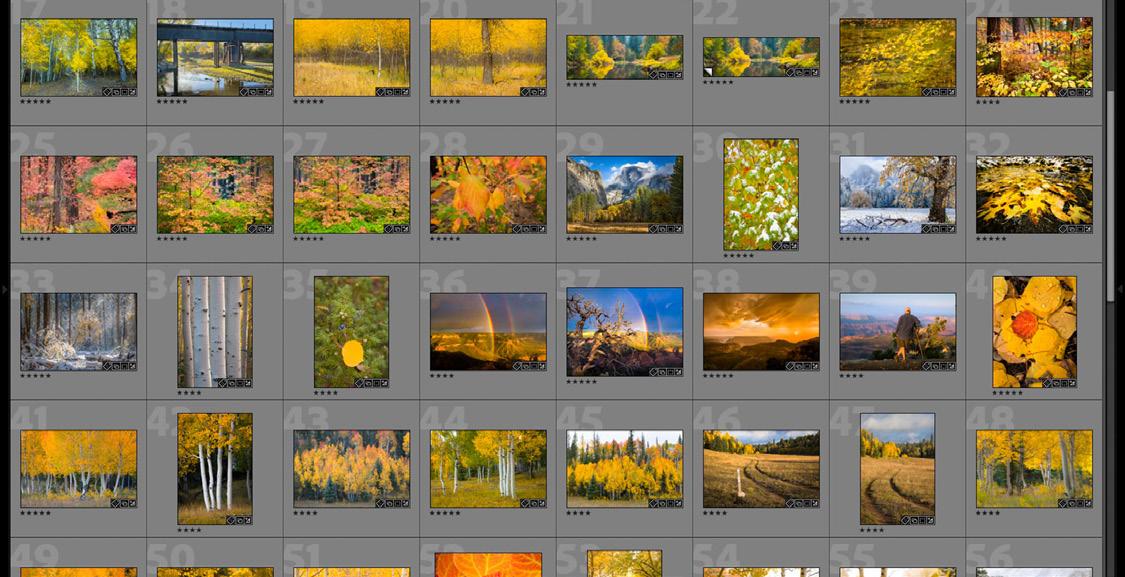 Figure 1. The initial selection of recent Fall photos with 4 or 5 stars, seen in Lightroom's Grid View
Figure 1. The initial selection of recent Fall photos with 4 or 5 stars, seen in Lightroom's Grid View
18 18
For this example I want to create a portfolio of recent Fall Color photographs, so I search for the keyword “Fall” and choose only those with 4 or 5 stars. This yields 92 images. In looking at them spread out, I can see several themes. One is the color gradient, and another is the subject, which includes trees, creeks, a railroad bridge, and a rainbow. A few are large panoramic scenes, but most of them exclude the sky or any indicator of where they were photographed. (Figure 1)
I use the Custom Order sort option (at the bottom of the Collection screen) to move them around. I’ve decided to put them together by the dominant color of the vegetation, from deep orange to bright yellow. Choosing that theme excludes some images outright, like those without any significant trees, and it reduces the set to 53 images. The color gradient across all of the images becomes evident (Figure 2).

Brooks Jensen, editor of the creative hotography magazine, LensWork, is an advocate of making sure that you combine like with like images, or “don’t include a plate with the bowls.” This is a subjective standard, but it’s an important idea to keep in mind
 Figure2. The reduced set of images, sorted by color, with all the "plates" removed
Figure 3. Using Lightroom's Survey View to choose between similar images. I chose the top one.
Figure2. The reduced set of images, sorted by color, with all the "plates" removed
Figure 3. Using Lightroom's Survey View to choose between similar images. I chose the top one.
19 19
Figure 4. The 20 photographs that made it in this version of my Fall portfolio
while putting together a portfolio. In this first pass I have a few plates. Only a few of them have a sky in them, so I drop those out. I also get rid of the sun star in the aspens, and the road at North Lake. There are also a lot of small decisions that I make along the way. I noticed that a lot of these are horizontal, so I took out the vertical and square frames. (Figure 2)

I end up with about 32 images that are candidates for the portfolio. Some of them are very similar, so I select them both and use the Survey View (N) in Lightroom to look at them side by side. (Figure 3) After selecting one from each pair, I’m ready to begin making the final choice for this portfolio. (Figure 4)
Keep in mind that nothing is written in stone. These are bytes on a disk and pixels on a screen, and both of those are outrageously inexpensive compared to film and paper. The idea here isn’t to develop a portfolio at one sitting, but to review your work in a way that lets you organize where you’ve been, and where you might want to further develop your photography. If you develop it into a book, a calendar,
or a web gallery, so much the better.
My final portfolio of 20 images reflects the choices I made above. It’s about the colors of fall. Tree trunks, mountains, and creeks are definitely in the back seat compared to the oranges, yellows, reds, and greens produced by these plants. (Figure 4) I had to exclude some photographs that I consider favorites. They are plates among bowls, and they might make a good foundation for other portfolios.
I mentioned in a previous column the importance of printing your work as a way to further your artistic development. The same is true with portfolios. The more time you spend with your work, the more you view it in different contexts and combinations, the greater its impact on your future work.
20 20
https://www.JoeDohertyPhotography.com
 Timeless Fall Colors - ©2022 Joe Doherty, All Rights Reserved
Timeless Fall Colors - ©2022 Joe Doherty, All Rights Reserved
21 21
An Announcement:
A Program by the Sierra Club Pasadena Group
"Iceland and Svalbard: An Arctic Journey”
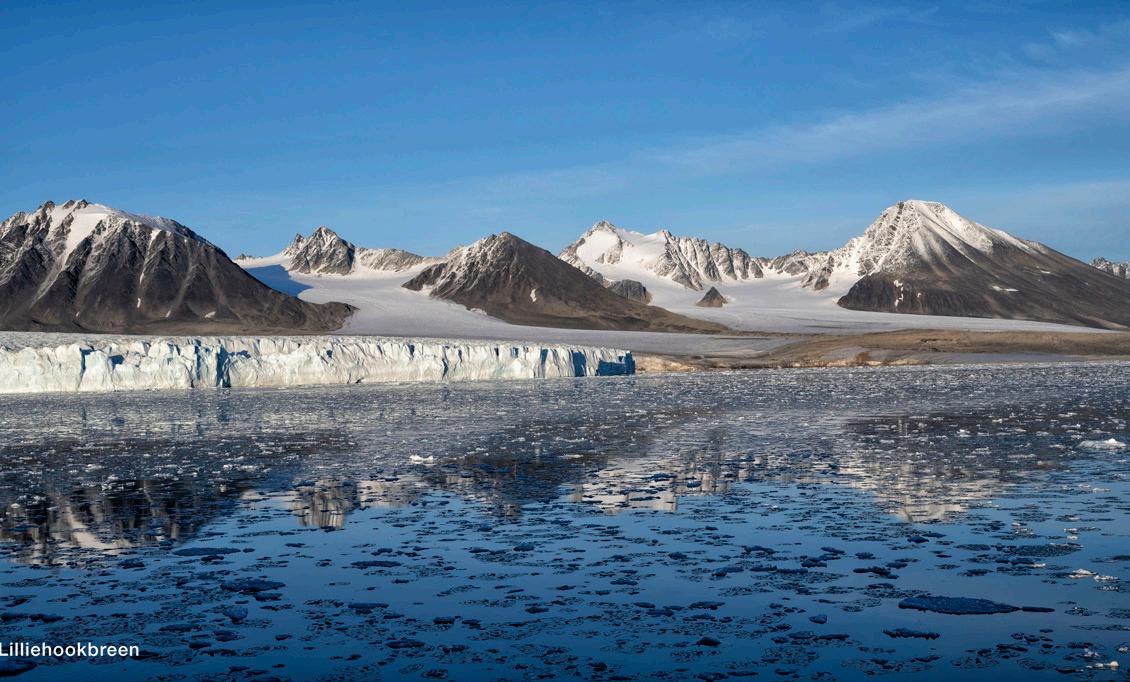
Wednesday, October 5, 2022 7:30 pm Eaton Canyon Nature Center Auditorium 1750 North Altadena Drive, Pasadena, CA 91107
Camera Committee member Carole Scurlock will give a photo presentation highlighting the untamed beauty of these locations and discuss how global warming is affecting their glacial landscape. Carole is a traveller, photographer, Sierra Club leader and editor of Arroyo View, the online newsletter of the Pasadena Group.
Information on the Pasadena Group's hikes, outings, and conservation activities precedes the program. Doors open at 7:00 pm for socializing and refreshments. Program starts at 7:30 pm, at Eaton Canyon Nature Center, 1750 N Altadena Drive, Pasadena.
Contact: Bill Joyce rollingtherock@verizon.net.
22 22




23 23 ©JohnNilsson CAMERA COMMITTEE Meetings Past meetings Outings Past outings Gallery Resources & links Sierra Club's Mission Statement To explore,enjoy and protect the wild places To practice and promote responsible use of the Earth's ecosystem and resources To educate and enlist humanity to protect and restore the quality of the natural and human environment And to use all lawful means to carry out these objectives Banner photo: © John Nilsson. all rights reserved Everyone is welcome at our meetings and on our outings. They can also see our magazine at no cost. However, only members can contribute to the Focal Points Magazine or participate in Member Shows or exhibits. Curious about what FocalPointsMagazine looks like? Check out the most recent issue here To join the Camera Committee or renew your membership, please send your contact information (at minimum your email address) with annual dues of $15 per individual or $25 per couple. Make the check payable to SCCC and mail it to: Joan Schipper – SCCC Membership 6100 Cashio Street Los Angeles, CA 90035 Meetings & outings Meetings are held on the second Thursday of even number months (February, April, June, August, October and December) at 7 PM. During Covid-19, our meetings are offered via the Zoom Meetings app. You will need to RSVP via our Calendar. See our Meetings page to see information about our upcoming meeting and links to some of our past meetings. WELCOME! The Sierra Club Camera Committee is an activity group within the Angeles Chapter, which we support through the medium of photography. Our goal is to show the natural beauty of our world as well as areas of conservation concerns and social justice. We do this through sharing and promoting our photography and by helping and inspiring our members through presentations, demonstration, discussion, as well as outings. Become a member – subscribe to Focal Points Magazinea member subscribe to Focal Points Magazine Camera Committee calendarCommittee calendar Legend: Outing Club support event Social event Activist event 5 upcoming activities shown My Location: (Use Search Options to enter your location) Search Options Multiple events (map only) Print ViewMap View Calendar View Date Activity (click title for full description) Sponsor Category Type Difficulty Away Links Thu 7:00 PM April Camera Committee meeting Angeles Chp Educational Thu 6/9/22 7:00 PM June Camera Committee meeting Angeles Chp Camera Comm. Educational Thu 7:00 PM August Camera Committee meeting Angeles Chp Educational Thu 10/13/22 October Camera Committee meeting Angeles Chp Camera Comm. Educational 12/8/22 Angeles Chp Camera Comm. Social Event List View (213) 387-4287 Sierra Club Angeles Chapter 3250 Wilshire Blvd. #1106 Los Angeles, CA 90010 View Google Map What's Your Passion? Angeles Chapter Home Sierra Club California Sierra Club National Terms of Use & Privacy Policy Site Map Visit the Chapter Offices Send Website Feedback The Angeles Chapter of the Sierra Club welcomes your participation in its century of involvement in the enjoyment and protection of our planet's environment. The Angeles Chapter spans Los Angeles and Orange Counties in Southern California, with an extensive program of hikes/hiking, national and international travel, local conservation campaigns, political action, and programs for people of all ages. Copyright © Angeles Chapter Sierra Club SIERRA CLUB ANGELESCHAPTER search Read how COVID-19 is impacting our activities. Announcing..... The New Sierra Club Camera Committee Website https://angeles.sierraclub.org/camera_committee ...Get News! ...Find out about meetings and Outings! ...Read the new and archived Focal Points Magazine ...Check out our gallery! ...Become a member!
24
Month’s
Photos
25 This
Member

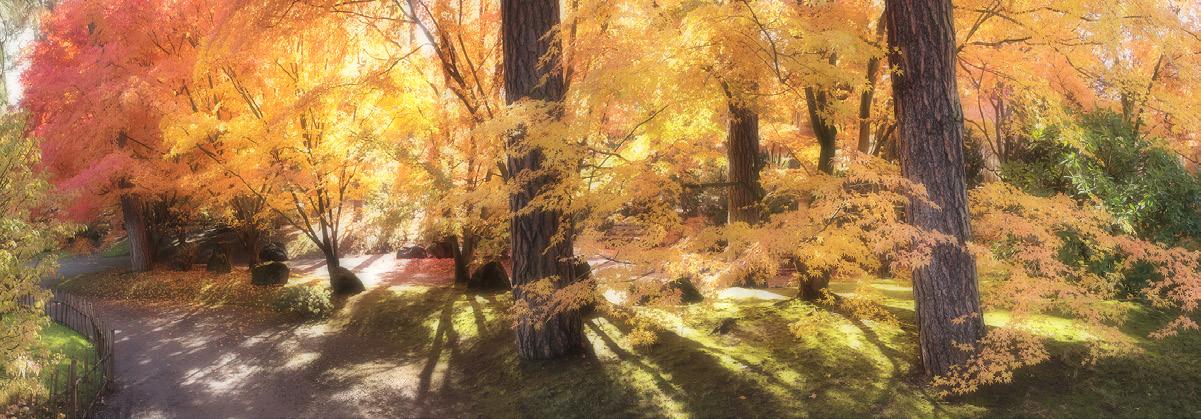
2626
John Clement
©2022 John Clement, All Rights Reserved
Above Left: Fall Furrows- SW of Spokane Washington as winter wheat begins to show around the red barns.
Left: Fall in the Garden- at Manito Park in Spokane
Above: Morning Majesty- we drove by this location in the dark and never saw the Elk. Third time was the charm as the sun rose in the east near Kalispell Montana.

Random images from various shoots around the NW from Montana to the Columbia Basin here in Eastern Washington.
27
Above: Banks Lake Reflections - Part of the Columbia Basin irrigation project south of Grand Coulee Dam.
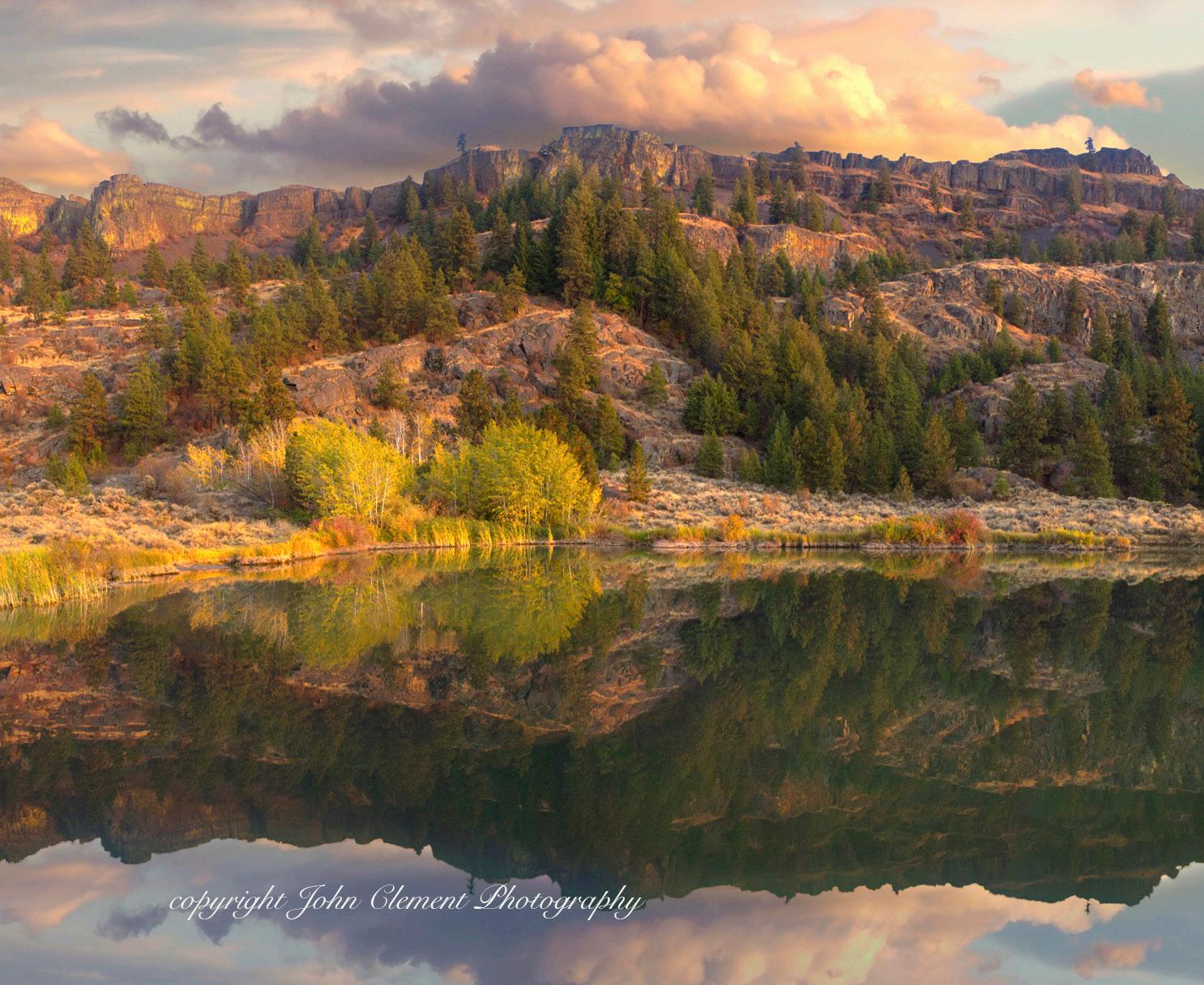
Above Right: Abstract Cat- Old railroad cars are a prime target for graffiti artists which sometimes produce some interesting pieces.
Below Right: Stones of Baring Creek - In east Glacier Park Montana.
28 28


29 29
Above: Still Waters on the Yakima River-Sunsets reflections and fall colors add to the beauty. I’ve been working on an image of this location for 5 years

30
30
 Above Right: Waiting for Breakfast- as the white egret stands like a statue -still waiting.
Above Right: Waiting for Breakfast- as the white egret stands like a statue -still waiting.
31 31



32 32

33 33 Jeff Gottesman ©2022 Jeff Gottesman, All Rights Reserved August, 2022 in Marin County, CA
Velda Ruddock

 ©2022 Velda Ruddock, All Rights Reserved
Olive baboon family, Shaba National Reserve Cheetah and cub, Masai Mara Triangle
©2022 Velda Ruddock, All Rights Reserved
Olive baboon family, Shaba National Reserve Cheetah and cub, Masai Mara Triangle
34 34
Babies in the wild

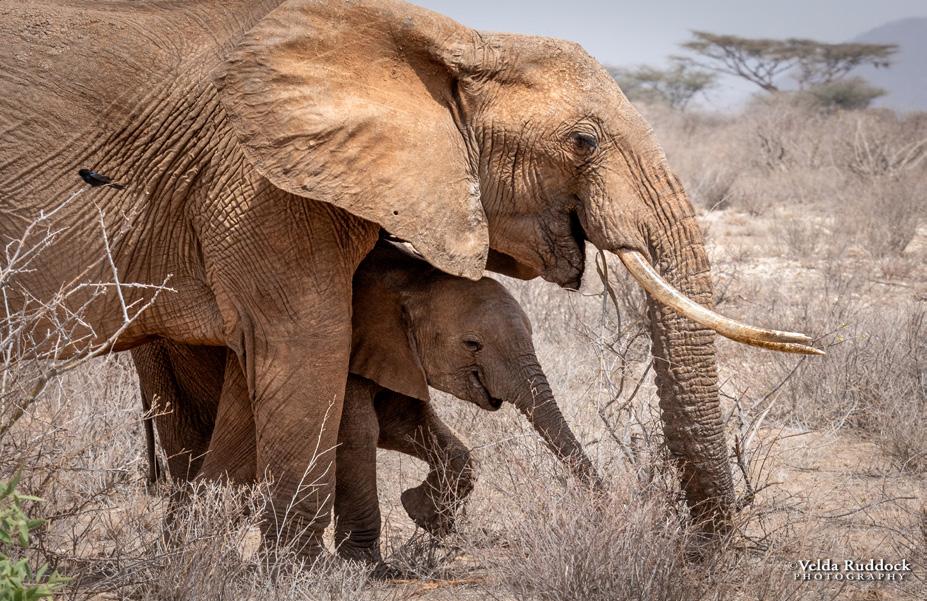
We spent two weeks photographing wildlife - and their babies - while we were in Kenya. Here are a few of those images.
Elephant mom and baby share a laugh, Buffalo Springs National Reserve
Impala herd nursery, Ol Pejeta Conservancy
35 35

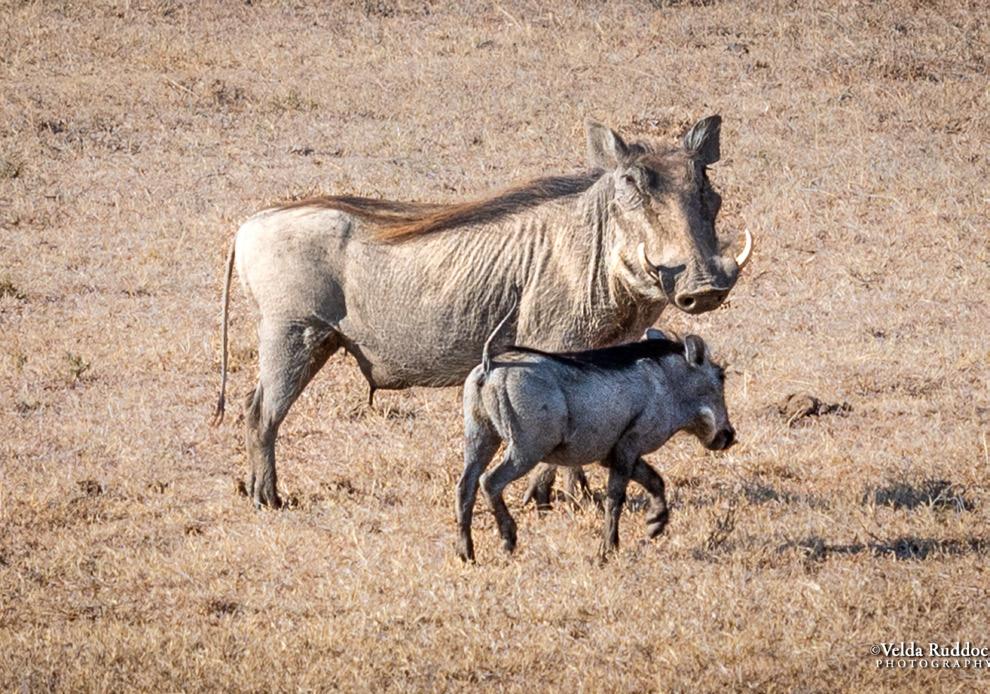 Lion cubs playing, Ol Pejeta Conservancy
Warthog mom and piglet, Ol Pejeta Conservancy
Lion cubs playing, Ol Pejeta Conservancy
Warthog mom and piglet, Ol Pejeta Conservancy
36 36

 Waterbuck mom and just-born calf, Shaba National Reserve
Zebra mom and foal on the move, Ol Pejeta Conservancy
©2022 Velda Ruddock, All Rights Reserved
Waterbuck mom and just-born calf, Shaba National Reserve
Zebra mom and foal on the move, Ol Pejeta Conservancy
©2022 Velda Ruddock, All Rights Reserved
37 37

38 38
These
This
Stu
Cloutier
by

are part of
39 SIERRA CLUB ANGELES CHAPTER CAMERA COMMITTEE MAY 2015 Thomas
39 ©2022 Thomas Cloutier, All Rights Reserved
images of the Oregon Coast
a workshop presented annually
Don Kirby
year
Levy and Willie Osterman conducted the Workshop.

40 40 ©2022 Thomas Cloutier, All Rights Reserved

41 41 ©2022 Thomas Cloutier, All Rights Reserved
Joe Doherty
©2022 Joe Doherty, All Rights Reserved
When we were on safari in Kenya my first impulse always was to grab my camera with the 100400mm lens, to get closeups of the wild animals. I had a second body with a 2470mm on the seat just in case the animals got so close I needed something shorter than 100mm.


What I didn't plan to do was to shoot landscapes. First of all, there is no getting out of the truck, so my traditional mode of shooting landscapes (walking up a hill, climbing into a canyon) was off the table. Second, there was no place to set up my tripod inside the truck, so everything was handheld (or sandbagged). And finally, the animals were so outrageously photogenic that I didn't want to take away from my time with them.
But photographs have a way of taking themselves. Yes, the animals are in these images, but as in many of my photographs of Sepulveda Basin, they are not always the stars of the photographs. They are placed within the frame to illustrate the vastness of the terrain, and the distances that they regularly travel to survive in the bush.
42
42
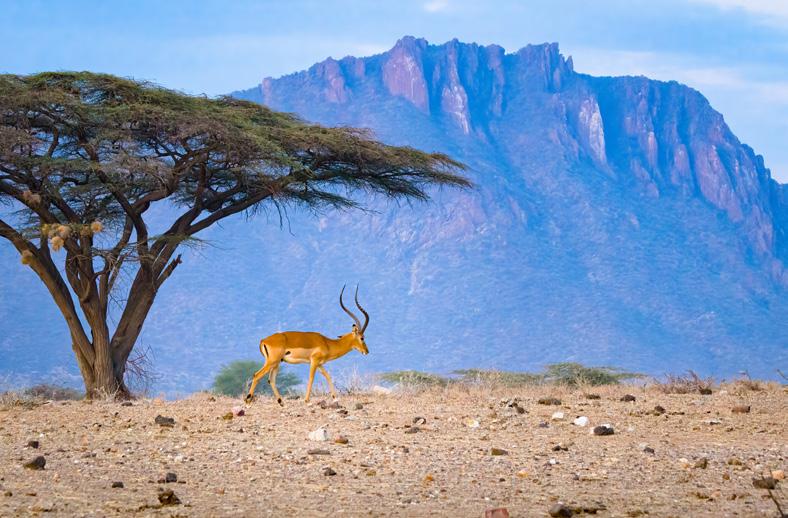
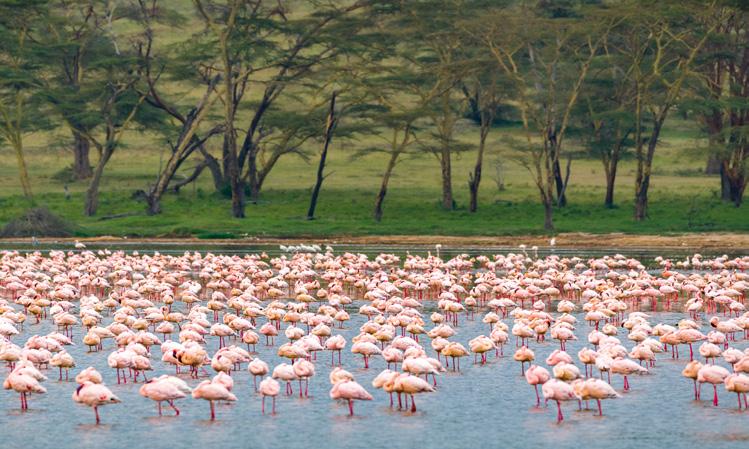

43 43


44 44

45 45 ©2022 Joe Doherty, All Rights Reserved

 A Shoebilll Stork stands at the edge of the water channel in the Bangweulu Wetlands in Zambia. This marshland is one of the few habitats left for this highly endangered bird. These storks can stand motionless for hours waiting the grab a fish.
A young female leopard resting in the shade.
A Shoebilll Stork stands at the edge of the water channel in the Bangweulu Wetlands in Zambia. This marshland is one of the few habitats left for this highly endangered bird. These storks can stand motionless for hours waiting the grab a fish.
A young female leopard resting in the shade.
46 SIERRA CLUB ANGELES CHAPTER CAMERA COMMITTEE MAY 2015 46
Beverly Houwing
©2022 Beverly Houwing, All Rights Reserved
On the same Africa trip that I went to Angola, I spent two weeks in Zambia afterwards. It was completely switching gears — instead of photographing tribes and interacting with many different people, I visited remote game reserves for wildlife photography. I went to the Bangweulu Wetlands for see the very endangered Shoebill Stork and Kafue National Park which has large numbers of Africa’s iconic animals.
A huge herd of black lechwe fills the open grassland in the Bangweulu Wetlands in Zambia. This herd grew in size as more and more lechwe emerged from the edges of the field shortly before sunset and joined the mass of lechwe in the open field.

47 47
Above: A black lechwe leads the way crossing the water channel in the Bangweulu Wetlands in Zambia. The marshland has well over 50,000 black lechwe, which are endemic to this area. Large grazing areas surrounded by ample waterways make this an ideal habitat for these antelope. This group was grazing on one side of the channel and then decided to cross over. The depth of the water forced them to wade and swim across, then jump through the shallower parts.

Above right: A herd of puku and lechwe are backlit in the heavy morning mist rising off the grass and water channels as the sun rises over the Busanga Plains in Kafue National Park in Zambia.
Below right: A small herd of wildebeest wander, spar and play on the plains. They stir up quite a bit of dust with their activites. It glows and backlights them from the sun that is getting low in the sky.
©2022 Beverly Houwing, All Rights Reserved
48
48


49 49
A small herd of wildebeest wander, spar and play on the plains. They stir up quite a bit of dust with their actives. It glows and backlights them from the sun that is getting low in the sky.
 ©Beverly Houwing, All Rights Reserved
©Beverly Houwing, All Rights Reserved
50 50
A female lion does not want to leave the rest of a carcass in the open to be devoured by vultures, which had already started landing nearby. After considerable effort, she drags the carcass to the edge of the channel, and then leaps over the waterway with the heavy remains of a male puku in her mouth.

51 51



52 SIERRA CLUB ANGELES CHAPTER CAMERA COMMITTEE MAY 2015 52
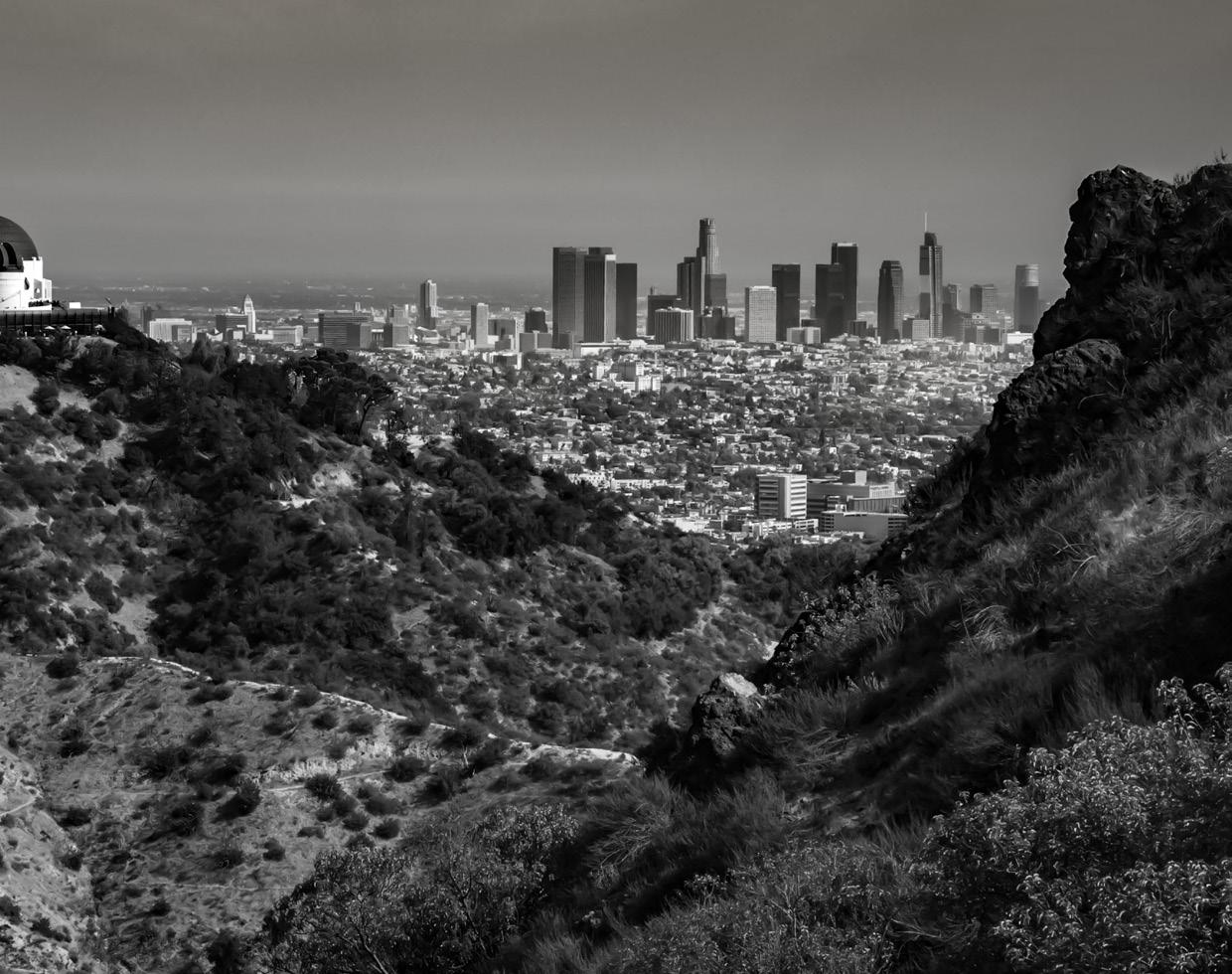
53 SIERRA CLUB ANGELES CHAPTER CAMERA COMMITTEE MAY 2015 John Nilsson ©2022 John Nilsson, All Rights Reserved Miscellaneous Ramblings Griffith Park Observatory - A Black and White Study 53


54


55 55
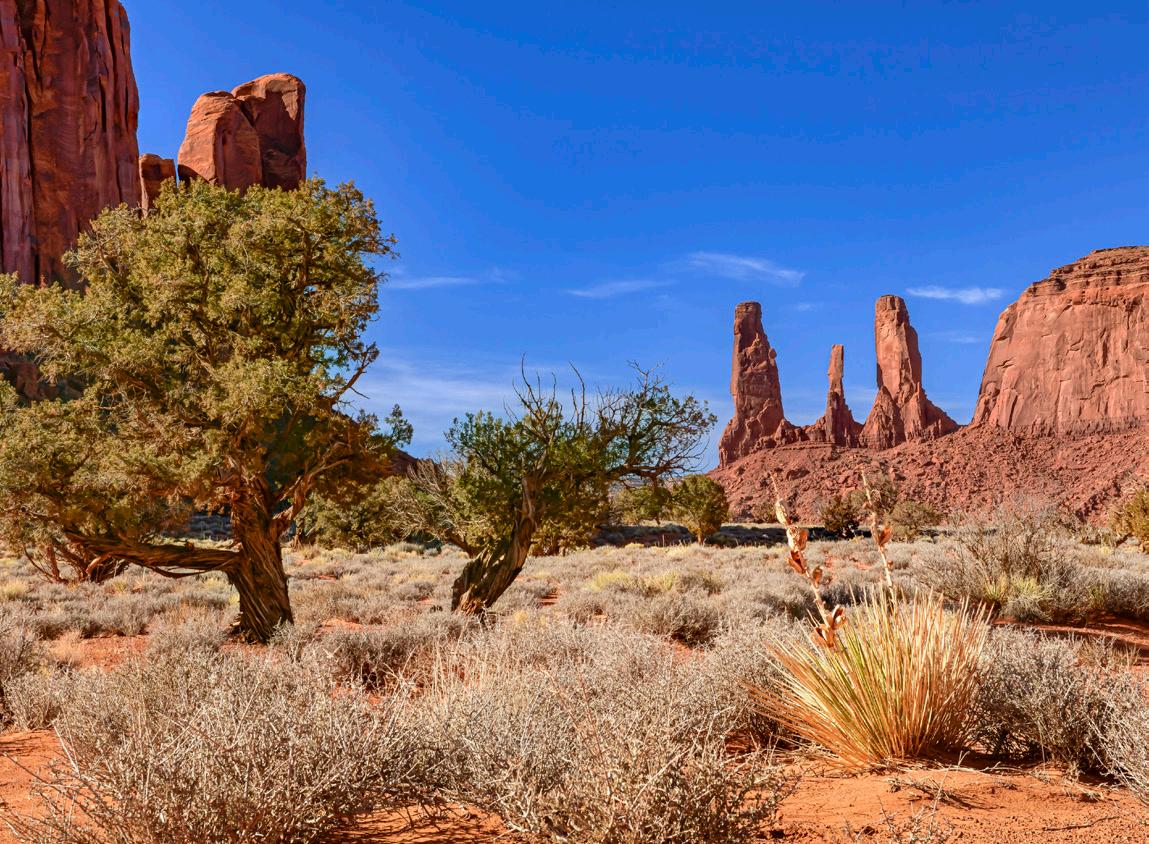

56
Fisanotti
Here are five color images taken on an overnight stay in Monument Valley last January.

57 John
©2022 John Fisanotti, All Rights Reserved 57
John Fisanotti,
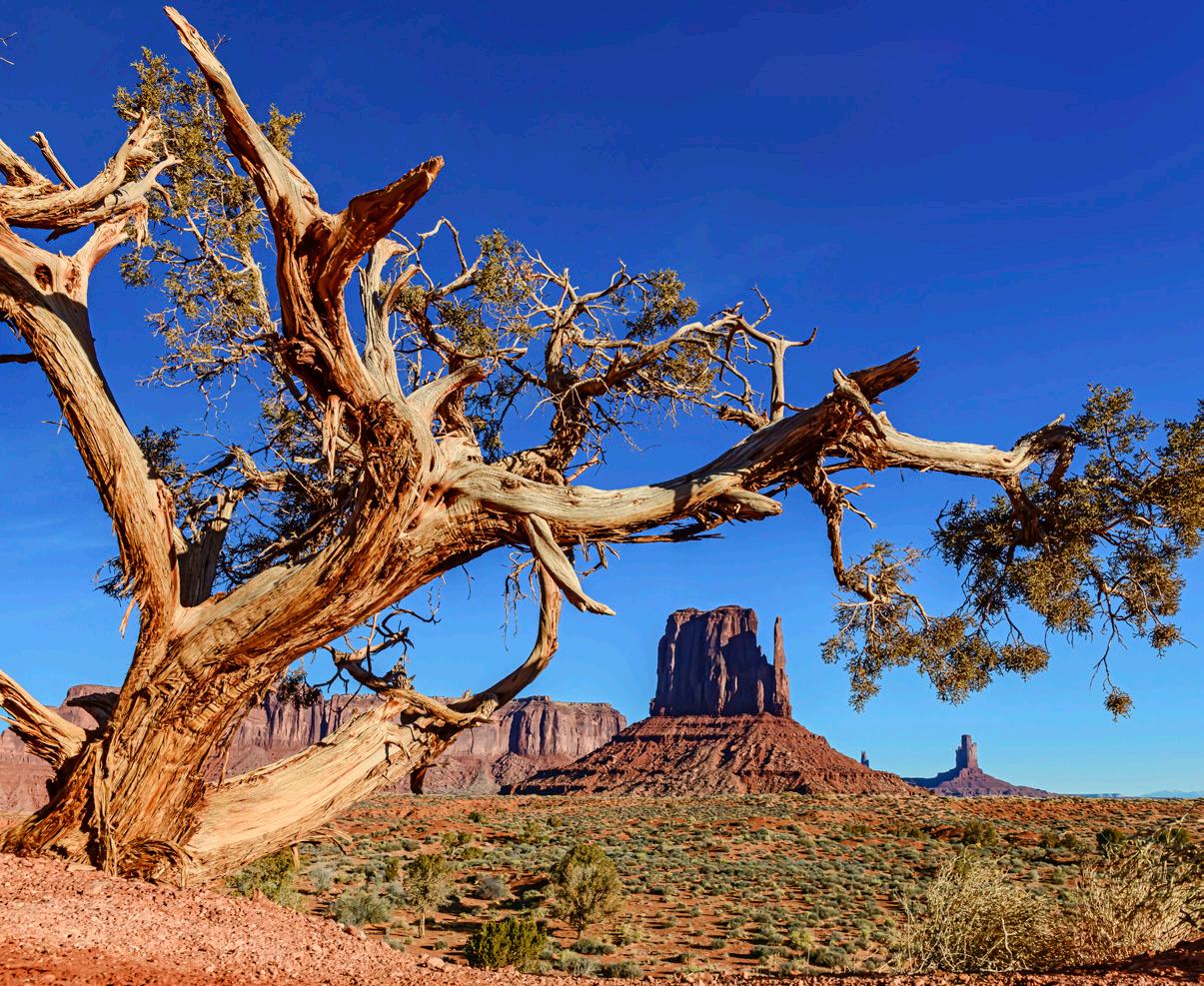
58 58 © 2022

59 59 Fisanotti, All Rights Reserved

 Above: Shoreline of Lake Machado at Ken Malloy Harbor Regional Park in Harbor City
Center: Coastline at Shaw's Cove in Laguna Beach
Right: Coastline at Ocean Trails Reserve in Rancho Palos Verdes
Above: Shoreline of Lake Machado at Ken Malloy Harbor Regional Park in Harbor City
Center: Coastline at Shaw's Cove in Laguna Beach
Right: Coastline at Ocean Trails Reserve in Rancho Palos Verdes
60
60
Larry Miller
©2022 Larry Miller, All Rights Reserved
The varied topography of shorelines make them a favorite photographic subject of mine. Here are some recent examples from my portfolio.

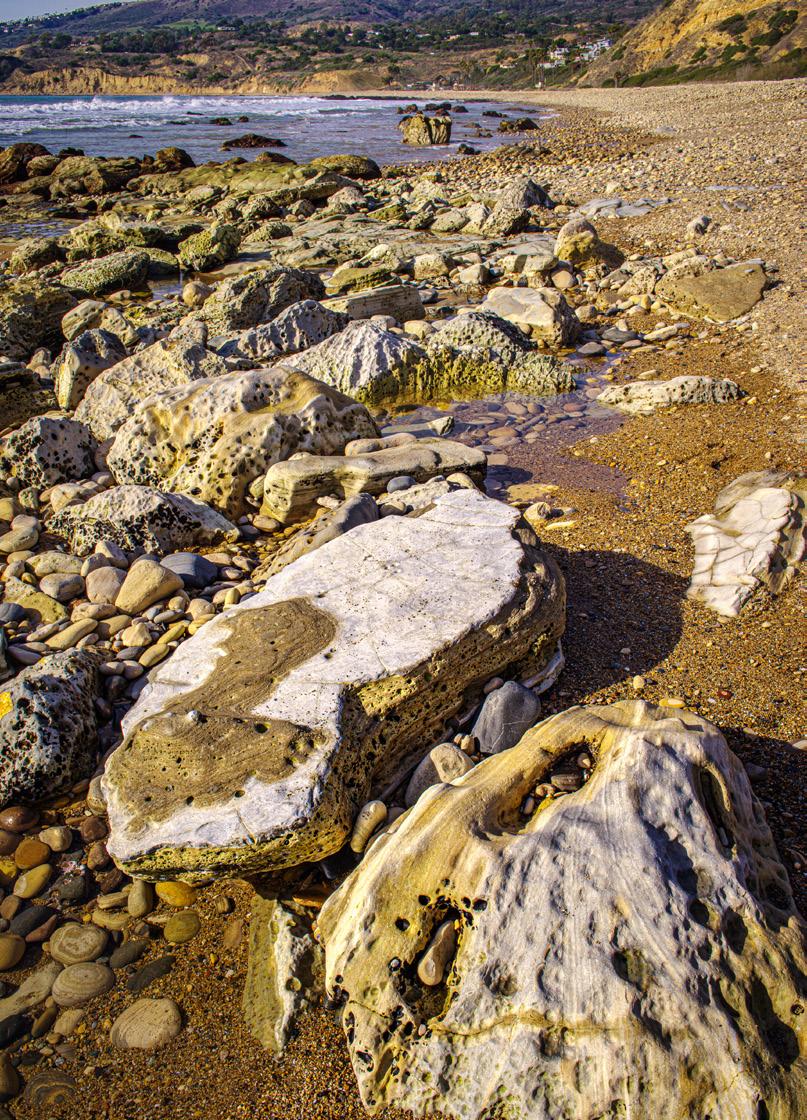
61
61
62
The Black and White Pages
63
Monument Valley

John
64 64
Fisanotti Nikon D850 Nikkor 70-200mm f2.8 @ 150mm f/11@1/8 Sec. ISO 64 © 2022 John Fisanotti, All Rights Reserved

65 65

66 66 ©2022 Velda Ruddock, All Rights Reserved White Rhino Mom and youngster, Ol Pejeta Conservancy Velda Ruddock Nikon D750 100-400mm f/4.5-6.3 @ 230mm f/16 @ 1/800 ISO 2800
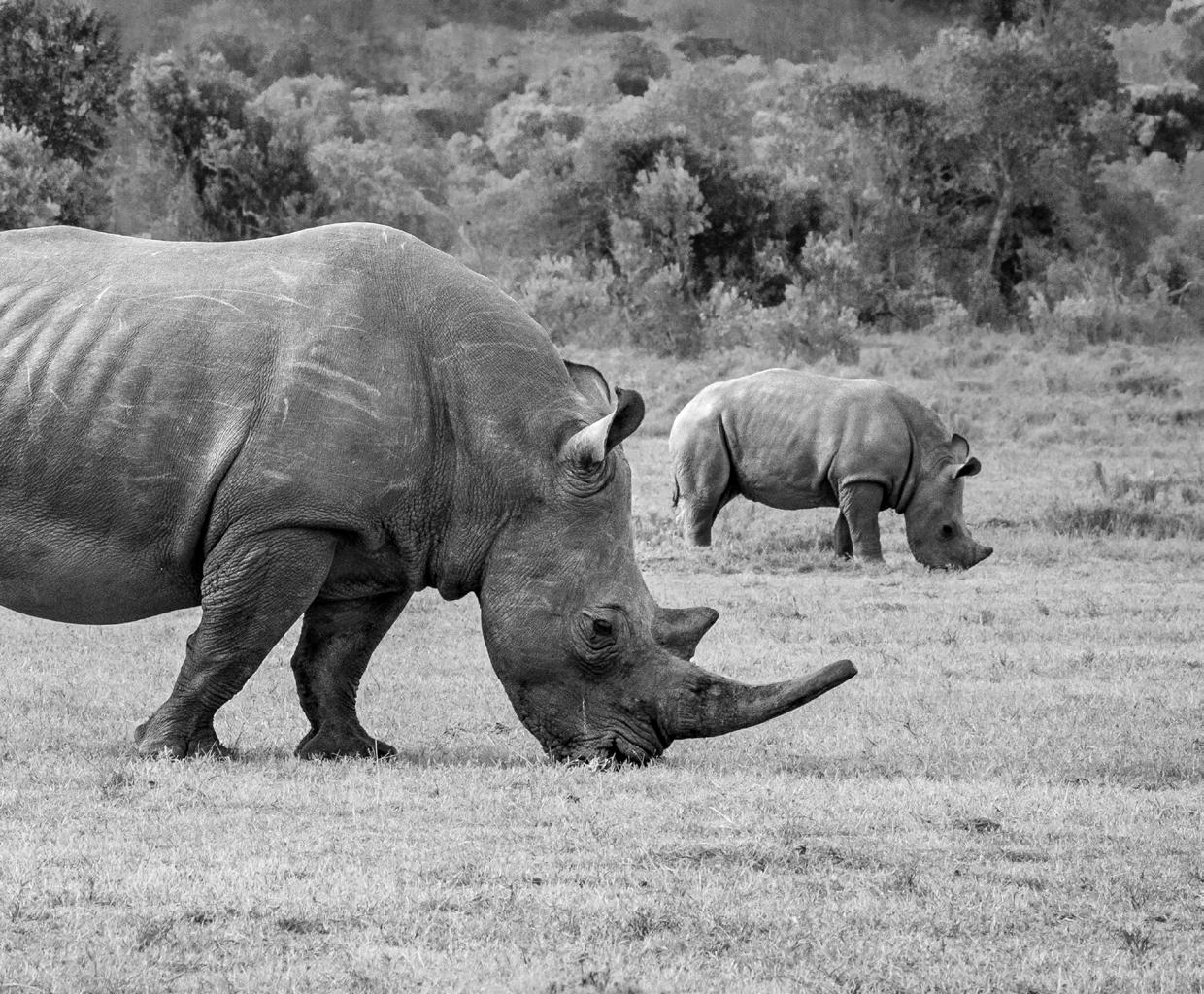
67 67
Ducks

68 68
and Snow Yellowstone Lake John Nilsson M-10 Monochrome Zeiss 35mm f/1:2 1/500@ f/9.5 ISO 1600 ©2022 John Nilsson, All Rights Reserved

69 69
Thomas

70 70 Oregon Coast
Cloutier Canon EOS Rebel T2i Tamaron 16-30mm F/3.5-6.3Di 1/200 @f/7.1 ISO 400 ©2022 Thomas Cloutier, All Rights Reserved

71 71
72
Contributor Bios Contributor Bios
73
Steve Anderson
Steve worked primarily in the conventional medium of Black and White silver-based photography for many years as he explored the natural landscape of the local San Gabriel Mountains and his beloved High Sierra in California. In the last 20 years he has engaged in digital photography as it has opened up new avenues and excitement about making images of the natural scene.
His interest in photography began in junior high school when he developed his first roll of film from a Kodak Brownie camera. He became very interested in combining photography and traveling adventures as a member of the Highlanders, a mountaineering club at Pasadena City College. His work turned more serious during military service as the landscape became his focus of attention.
Steve’s interest in the environmental movement, starting in his college days, led him to actively seek ways of using his photography to help in a personally significant way. He joined the Mono Lake Committee 40 years ago and has been an active leader in the Sierra Club since 1981. He served as the chairperson of the Camera Committee of the Angeles Chapter for 5 years.
Steve’s images have appeared in Sierra, the Southern Sierran, Images of the West, A Portrait of Bodie, and the Sierra Club Angeles Chapter Schedule of Activities. Some of his monochrome images were significant contributions to help save Mono Lake. He has had work shown in a number of local galleries. Steve was the San Gabriel Mountains National Monument Artist in Residence in 2015. Steve has published four photography books that are available through Blurb.com.
“My images sum up my feelings about the grandeur of nature. It is never just one thing that touches me when I try to capture a moment, but always a vast array of emotional and photographic textures. Most of my images are therefore complex and detailed.”
Email: sandersonimagery@outlook.com
Viewingwebsite:www.pbase.com/spanderson
John Clement
John began his career in photography in the early 70’s after graduating from Central Washington University with a double major in Geology and Geography. Since then he has earned a Masters of Photography from the Professional Photographers of America. He has received over 65 regional, national and international awards for his pictorial and commercial work. His photographs grace the walls of many businesses in the Northwest and has been published in numerous calendars and coffee table books.
He has provided photographs for Country Music Magazine and for Northwest Travel Magazine. He has supplied murals for the Seattle Seahawks Stadium and images for The Carousel of Dreams in Kennewick, WA. Current projects include 17 – 4x8 foot glass panels featuring his landscapes in Eastern Washington for the Pasco Airport Remodel. Last year he finished a major project for the Othello Medical Clinic where almost 200 images were used to decorate the facilities ranging in size from 24” to 35’ in size. His work can be viewd at:
www.johnclementgallery.com
John Clement Photography Face Book Professional page The Kiona Winery in Benton City, and at Allied Arts Gallery in Richland, WA.
74
74
JW Doherty
Joe Doherty grew up in Los Angeles and developed his first roll of film in 1972. He has been a visual communicator ever since. He spent his teens and twenties working in photography, most of it behind a camera as a freelance editorial shooter.
He switched careers when his son was born, earning a PhD in political science from UCLA specializing in American politics and research methods. This led to an opportunity to run a research center and teach at UCLA Law, where he became best known as an empirical bankruptcy scholar. After retiring from UCLA in 2016 he continued to consult, but now he and his wife Velda Ruddock spend much of their time in the field, across the West, capturing the landscape.
John Fisanotti
As a youth, John’s interest in photography stemmed from an interest in astronomy. His first photos were attempts to photograph the night sky using a folding Kodak camera, that once belonged to an uncle. Later, John used a 35mm rangefinder camera to photograph nature, particularly the San Gabriel Mountains above his home in La Crescenta. After high school, John sold his telescope to purchase a 35mm SLR camera outfit.
John was a photography major in his first three years of college. He has used 35mm, 2-1/4 medium format and 4x5 view cameras. John expected to be a commercial photographer. His personal work leaned heavily to shooting landscapes and outdoors. In 1977 John changed majors. After graduating from California State University Los Angeles with a Bachelor of Arts Degree in Urban Studies in 1979, John’s first post job college was in a commercial photo laboratory. In 1980, he pivoted from photography and began his 32-year career in public service. John worked for four Southern California cities in city planning, community development and redevelopment, and concluded his career as a Project Manager for the Culver City Redevelopment Agency. During these decades, he continued to shoot outdoor scenic images whenever possible. After retiring from public service in 2012, John has pursued his astronomical and photographic interests. Beginning in 2013, John has been a telescope operator for the 60" reflector telescope at Mt. Wilson Observatory. And John has increased his photographic portfolioconcentrating on outdoors, landscape, travel and astronomical images. Beginning in 2018, he has expanded his repertoire to include architectural and real estate photography. Occasionally, John has been fortunate to have photographs selected for various exhibitions or publications. He currently shoots with Nikon DSLR cameras. John’s photographic websites:
Landscape, Travel and Astronomical images http://www.johnfisanottiphotography.com; Architectural and Real Estate photography are at http://www.architecturalphotosbyfisanotti.com.
Contact John at either jfisanotti@sbcglobal.net or fisanottifotos@gmail.com.
75
Phil Witt
Phil Witt has been photographing nature since he got his first SLR camera in the late 70s. An avid birder, he is a volunteer at the Scherman Hoffman Wildlife Sanctuary of NJ Audubon in Bernardsville, where he coleads the photography workshop series. He is currently on NJ Audubon’s Board of Directors. He is a past president of the Camera Naturalist Photo Club, and program chair of the Somerset County Camera Club. He judges photography competitions and presents instructional programs at photography clubs throughout New Jersey. He received the NJ Federation of Camera Club’s 2017 Citation for service to photography in the state.
He and his wife enjoy traveling the world for photography--Antarctica, the Galapagos, Tanzania, Iceland, Costa Rica, among others.
When not birding or photographing, he is a (mostly retired) forensic psychologist, specializing in legal cases and court testimony.
https://philwitt.smugmug.com
Creativity has always been important to me. I received my first Brownie camera for my twelfth birthday and I can’t remember a time I’ve been without a camera close at hand.
I studied the social sciences and art, and later earned a Masters degree in Information and Library Science degree. All of my jobs allowed me to be creative, entrepreneurial, and innovative. For the last 22 years of my research career I was Director of Intelligence for a global advertising and marketing agency. TBWA\ Chiat\Day helped clients such as Apple, Nissan, Pepsi, Gatorade, Energizer, and many more, and I was considered a leader in my field.
During our time off, my husband, Joe Doherty and I would travel, photographing family, events and locations. However, in 2011 we traveled to the Eastern Sierra for the fall colors, and although we didn’t realize it at the time, when the sun came up over Lake Sabrina, it was the start of change in our careers.
By 2016 we had both left our “day jobs,” and we started traveling – and shooting nature – big and small – extensively. Our four-wheel drive popup camper allowed us to go to areas a regular car can’t go and we were – and are –always looking for our next adventure.
Velda Ruddock
76
76
Susan Manley
Susan Manley has more than 35 years experience as a photographer. Her career consisted mainly working in a Communications Department writing and shooting a wide variety of public relations and photojournalism photos.
Since she retired approximately ten years ago, she switched her focus onto nature photography including landscapes and wildlife in America.
ssnmanley@Yahoo.com
Paul Reinstein
I have two lifelong hobbies; photography and fine woodworking. My father fostered both those interests. At 14, right before I went on a 1 week backpacking trip around Yosemite Valley with my friend Joe (16) who could drive, my father taught me the basics of using a camera on an Olympus camera that shot half frames on 35mm film. Can you imagine allowing a 14 year old to do that in today’s world? By 20, I was fully independent. In my 20s, I bought a Minolta SRT101, and I also started dabbling in woodworking as a way to have simple furniture while working my way through college (Biochemistry, UCLA). I even had a simple B&W darkroom for a while. I shot mostly landscapes. After getting my degree, I decided I didn’t like working in that field, so I went back to school, and worked my way through a masters degree (Electronics Engineering, CSULB). I spent the majority of my career at The Aerospace Corp, working mostly on electrical power systems for rockets and satellites for the Air Force, NASA and the NRO. During that time, when not working, I began focusing mostly on fine woodworking, shooting occasional snapshots.
By 50, my woodshop was enviable, my wife and I were flipping homes on the side, I was a manager at work, and digital cameras reignited my interest in photography. When the music stopped in real estate, we built our own home in Mar Vista. Then, my boss, and his boss both died unexpectedly (and independently), a huge layoff was announced, and I was retired. I got my general contractor’s license, and tried that for a couple of years. I retired fully at 60, earlier than I would have imagined.
By 2016, I had amassed a number of bird photos, just by happenstance, so I decided to see what I could get that number up to, just for fun. That turned out to be eminently satisfying, albeit expensive, and now I spend much of my time shooting birds locally or travelling worldwide to do so. My big birding trips so far include the Galapagos and the UK, and my list is presently up to about 350 species, and I have a small presence on Instagram and on Flickr https://www.flickr.com/photos/preinstein54/. I’ve sold a few images upon request, several of my friends have my images on their walls, and I still dabble in woodworking, including making my own frames.
77
77
Jeff Gottesman
I first became interested in photography back in high school sometime in the last century. My father worked for many years in a professional camera store in Pittsburgh (Kadet Photo Supply) where he did the picture framing.
I spent a few summers working in that camera store mostly doing shipping and receiving but every chance I got, I would be talking with and learning from the salesmen who knew everything about cameras and photography.
At the end of the summer they gave me a used Pentax Spotmatic 500 and there began my love of photography. I did all the shooting and darkroom work for my high school yearbook and later as a photographer and writer for college newspapers. At the same time, I developed a love of nature and graduated college with a degree in Geology (with several electives in Photography). That was where all the environmentalists spent their time.
The love of nature and photography were a perfect match and after retiring from IT a few years ago (there was a career change somewhere in there) I’ve returned to those early loves and am able to spend a lot more time on photography, enjoying workshops and especially the Sierra Club trips :).
My photos can be seen at https://www.jeffgottesmanphotography.com/
Wiebe Gortmaker
I am based in Boulder, Colorado and consider myself a full-time hobbyist. After retiring from the airlines, I have devoted a high percentage of my time to travel and learning photography.
In the past few years I have moved from travel photography to primarily wildlife and landscape photography. Prior to the airlines, I spent considerable time in remote areas of Alaska and Central and South America. I am now able to revisit those places with a focus on photography.
I have lived in Colorado since college and spent a lot of time flying, hiking, and climbing in the wild places in my back yard.
With my new hobby I am looking at these places in a new way, trying to preserve the image and feelings I have of the wildlife and landscape. This process motivates me to learn and discover.
Wiebe is concentrating on his photography at this time and is not currently active on social media. He does plan to have a website together in the near future.
78
78
Joyce Harlan
I have always loved photography! First to document and save photos of my sons. We had little to no money for film developing in the beginning but I kept shooting. Every year my husband would ask me what I wanted for Christmas/birthday and I would always say “develop my film”!! After several years he finally did, but everything was yellow but the memories were there. From there, when I was coaching downhill skiing for Westside Special Olympics, I took photos of my athletes and created a book for each of them. The pure joy I saw on their and their family’s faces was priceless!
Finally, I was at Mammoth skiing with my family (grandkids!!) and we had lunch at Bergers Burgers. They had the most gorgeous landscape photos on they walls. I asked the waitress about them and she said they were by Vern Clevenger and that he often came in for lunch after skiing and she would point him out for me. She did, I asked about workshops and he said “absolutely”. That was it!! I took one workshop from him and many, many more with Mountain Light in Bishop with Jack Dykinga, John Shaw, Jerry Dodrill, David Meunch and Jeff Foote. One of the most memorable was their ten day inaugural rafting the Grand Canyon trip with Jack & Jerry. Over the years I have been blessed to travel the world with Muench Workshops (Cuba, Yukon, Mongolia, Alaska) Visionary Wild (Botswana, Kenya, Patagonia, Greenland), Aurora Expenditions (Antarctica), and Nathaniel Smalley (Iceland, Maine fall color).
Photography mixed with travel has been my favorite soul food for a long, long time. And will continue to be for as long as I am able. Sadly, I am missing a trip to China in April and Uganda in June to see the gorillas. But I’ll get there as soon as it is safe again.
Allen Johnson
I'm a PhD in psychology with a passion for photography. I'm also the author of several books: a memoir on France entitled "Pardon My French" and two novels: "The Awakening" and "Spike, Benny, and Boone."
79
Butch Mazzuca
I was born in Chicago IL and attended the University of Dayton. After graduation I served four and half years as a helicopter pilot in the U.S. Marine Corps.
My last official ‘work' position was President & CEO of Arthur J. Gallagher & Co-Denver. I Retired in 1999 and moved to Vail where I taught skiing, a “fundamentals of photography” class at our local community college and wrote (still do) commentary for the Vail Daily Newspaper.
I Started taking pictures in 2008 when my wife Bobbi “talked me” into traveling to Africa (we returned seven more times! ) My images have been published in Shutter Bug Magazine, Sarasota Magazine, Travel Africa Magazine (5 times) and Africa Geographic (6 times including two photo essays) I consider myself a generalist although African wildlife and landscape photography are my favorites.
John Nilsson
I have a fond memory from my early years of my father dragging me to the Denver Museum of Natural History on a winter Sunday afternoon. He had just purchased a Bosely 35mm camera and had decided he wanted desperately to photograph one of the dioramas. I distinctly remember the display was of several Seal Lions in a beautiful blue half-light of the Arctic winter that required a tricky long exposure. The transparency he showed me several weeks later was spectacular and mysterious to my young eyes. Although the demands of Medical School made this photo one of the first and last he shot, at 5 years old I was hooked.
The arrival of the digital age brought photography back to me as a conscious endeavor - first as a pastime enjoyed with friends who were also afflicted, and then as a practitioner of real estate and architectural photography during my 40 years as a real estate broker. Since retiring and moving to Los Angeles, I have continued my hobby as a nature and landscape photographer through active membership in the Sierra Club Angeles Chapter Camera Committee and my vocation as a real estate photographer through my company Oz Images LA. The camera is now a tool for adventure!
www.OzImagesLA.com dtlanow@gmail.com
80
80
In the summer of 2000, David traveled from New Jersey to Montana to visit Glacier National Park. With camera in hand, he attempted to capture the amazing wildlife and beautiful landscapes. Although his photos were somewhat disappointing, the experience inspired him to study the art of photography and travel the world to witness and capture the wonders of our natural world.
David is a member of the North American Nature Photography Association and an Associate Naturalist with The New Jersey Audubon Society. Over the past 15 years, David has shared his knowledge teaching workshops, leading tours, and writing articles. David’s photos have been recognized in several international competitions and have been published in books, magazines and on calendars.
David is an accomplished public speaker and has appeared at events including the New England Camera Club Council Annual Conference (2014 & 2016), the Connecticut Association of Photographers and New Jersey Audubon's Birding Festival.
David's experience judging photo competitions has taken him as far as Budoia, Italy to judge the Bio Photo Contest. In 2014, David was awarded the New Jersey Federation of Camera Clubs Citation in recognition for his contributions to the advancement of the art and science of photography in the state.
www.desrochersphography.com
Larry Miller
I bought my first SLR camera in 1985 to document hikes in the local mountains that I did with friends. My first Sierra Club Camera Committee outing was a wildflower photo shoot in the Santa Monica Mountains led by Steve Cohen in 1991. Since then the SCCC has introduced me to many other scenic destinations, including the Antelope Valley California Poppy Reserve, the Gorman hills, Saddleback Butte State Park, East Mojave National Preserve, the Eastern and Southern Sierras, Point Reyes, the Big Sur Coast, the Ancient Bristlecone Pine Forest, Red Rock Canyon State Park, Tejon Ranch, and Valley of Fire State Park in Nevada. At the same time, my own photography trips gradually expanded in scope over the years to include most of the western National Parks and National Monuments, with the Colorado Plateau becoming a personal favorite.
Photography is an avocation that took a backseat to my career during the 32+ years that I worked as a radar systems engineer at Hughes Aircraft/ Raytheon Company. Since retiring in 2013, I’ve been able to devote more time to developing my photographic skills. Experiencing and sharing the beauty of nature continues to be my primary motivation.
81 David DesRochers
81
Thomas Loucks
Tom has been a longstanding amateur photographer, but only in recent years has he had more serious time to devote to the hobby. He garnered first place in National Audubon’s 2004 Nature’s Odyssey contest and has placed well in several contests by Nature’s Best, Denver Audubon’s Share the View, and the Merrimack Valley’s George W. Glennie Nature Contest. He has two images of “Alumni Adventurers” on permanent display at Dartmouth College. He is also the incoming President of Mile High Photo Club in Denver (2021-2022) where he currently serves as VP and as a Director. His photographic interests are landscape, wildlife, and travel photography, though his favorite subjects are alpine landscapes. Recently retired, Tom is looking forward to spending more time on photography and other outdoor activities. He recently signed up as a volunteer with Denver Audubon to assist with field trips and hopes that those will soon resume.
Basil Katsaros
A native of Denver, Colorado, I first attended Lewis and Clark College in Portland, Oregon. Not understanding humidity or seeing the sun for 30 days, I transferred to the University of Colorado. During my junior year, a roommate needed money and sold me his Pentax 35mm camera. That moment launched my interest in photography. My interests and knowledge were expanded by the Nikon School of Photography.
In the earlier days, subject matter centered around my twin sons with travel photos and Christmas cards. As a real estate appraiser, I used photography in much of my work. I must admit, however, the 70’s primarily utilized a Polaroid as film was too time consuming for client demands. I have since graduated to two Nikon digital cameras and too many lenses.
While attempting to downshift in work, I occasionally use my photography skills to testify as an expert witness in real estate. My interests include travel, landscape, and wildlife photography. I’m not smart enough to have a website, maybe someone can show me how. Most images are for personal enjoyment and mainly remain in my computer. My goal at this time is too not only become a better photographer, but to conquer Photoshop!!!
82
Peter Bennett
My mother’s father was a studio photographer on the Coney Island Boardwalk, my father’s father was an artist in Germany, and my father was a filmmaker and amateur still photographer in New York, so naturally I decided to pursue a career in music. Luckily after hearing the error of my ways, I picked up my father’s old Nikkormat and haven’t looked back since.
From 1998 to 2014 I ran my own stock agency, Ambient Images, which specialized in photos of New York and California. In 2015 I formed Citizen of the Planet, LLC, devoted exclusively to the distribution of my stories and work that focus on environmental subjects such as water and air quality issues, fossil fuels, drought, green construction, alternative energies and urban farming.
My editorial work has appeared in numerous publications and books, and I am privileged to have my fine art prints hang in museums, the California State Capitol and many other private institutions and collectors.
I’ve also had to opportunity to have worked with many local environmental orga nizations including FoLAR (Friends of the LA River), Heal the Bay, Algalita Marine Research Foundation, Communities for a Better Environ ment, and the LA Conservation Corps.
I have been an instructor for over ten years at the Los Angeles Center of Photography (formerly the Julia Dean Photo Workshops). I love teaching photography and having the opportunity to pass on what I was given from all the amazing teachers I’ve had the honor to learn from.
Karen Schuenemann
Karen Schuenemann is a Nature and Wildlife photographer frequently found exploring the parks and wetlands of Southern California. In 2015, she left her retail management job to pursue her passion for Wildlife Photography. Her work focuses on “Urban Wilderness” and she spent over 100 days photographing the Red Foxes in her neighborhood in 2020 during the COVID 19 pandemic. She recently was awarded a Highly Commended Award-Bird Behavior in the 2018 Wildlife Photographer of the Year sponsored by the London Natural History Museum. Her work was exhibited in Davos, Switzerland at the World Economic Summit in 2019. In 2017 she was the Professional Honorable Mention in the National Audubon Contest.
Her work has hung in the London Natural History Museum and has been included in shows at the San Diego Natural History Museum, The G2 Gallery, Palos Verdes Art Center and Armenia Conservation Show. She has been published in Nature’s Best, Audubon Magazine, USA Today, NANPA, Shadow and Light Magazine, and American Photo Maga zine. In addition, she has garnered numerous awards from Best in Show in Los Angeles County Fair to Honorable Mention in the Na tional Park Contest.
She enjoys writing about her photographic adventures and has written articles for NANPA and enjoyed being a judge in several photography contests. She was the 2019 President for the Photography and Digital Artists group of the Palos Verdes Art Center and was the volunteer Faculty Coordinator for the NANPA High School Scholarship Program in Tennessee.
She currently leads workshops to a variety of locations from Bosque Del Apache, to the Grand Tetons to Africa and Central America with her company, Wilderness At Heart Photography, LLC. She enjoys teaching classes at Samy’s Cameras in Los Angeles and Tuttle Cameras in Long Beach.
Karen currently celebrates life with her husband and two dogs in St. George, Utah.
83 83
Bob Beresh
Los Angeles is where commercial photographer Bob Beresh will always call home, but having recently relocated to Addis Ababa, Ethiopia, he is truly a global creative. His commercial photography includes work for clients in automotive, aviation, corporate executive and business portraiture, architecture, and product work. Bob’s photos are influenced by his observations in nature, travel and sports to deliver memorable images.
Bob served two years as US Forest Service Artist in Residence to interpret and showcase the beauty of the Angeles National Forest and is past Chairman of the Sierra Club Camera Committee, Angeles Chapter.”
bentriver.com
bobbereshstudio.com
Bob Cates
Bob Cates led his first Camera Committee outing in 1975 as co-leader with Allan Der, so his roots go way back. He has chaired the Angeles Chapter History Committee since the mid-70s, and as such has archived tens of thousands of photographic images, many from his own documentation of Club outings, but also images donated from hundreds of Club members.
He is primarily a nature/landscape photographer, but is also drawn to macrophotography— primarily of botanical subjects. Since 2015 he has lived in Pasadena and frequently may be found haunting the grounds of the Huntington Library, Art Museum and Botanical Gardens.
84
84
The Watchman
 © 2022John Nilsson, All Rights Reserved
© 2022John Nilsson, All Rights Reserved
85
85
86
Causes, Notes, and Announcements
87 Notes and Announcements
Notes and Announcements
A Note from the Editor…
In coming issues of Focal Points Magazine
I will be limiting the number of photos submitted to a maximum of eight photos per contributor.
Please select your very best photos for each submission and limit to that number - so I don’t have to make the difficult decision on what to include for you!
An exception will be for photos submitted for the Cover Story. For these contributions, the only limit will be what is necessary to tell the story.
Thanks for following this guideline in your future contributions to Focal Points Magazine!
88
88
The Treasure is Buried Right.... Here
Nilsson,
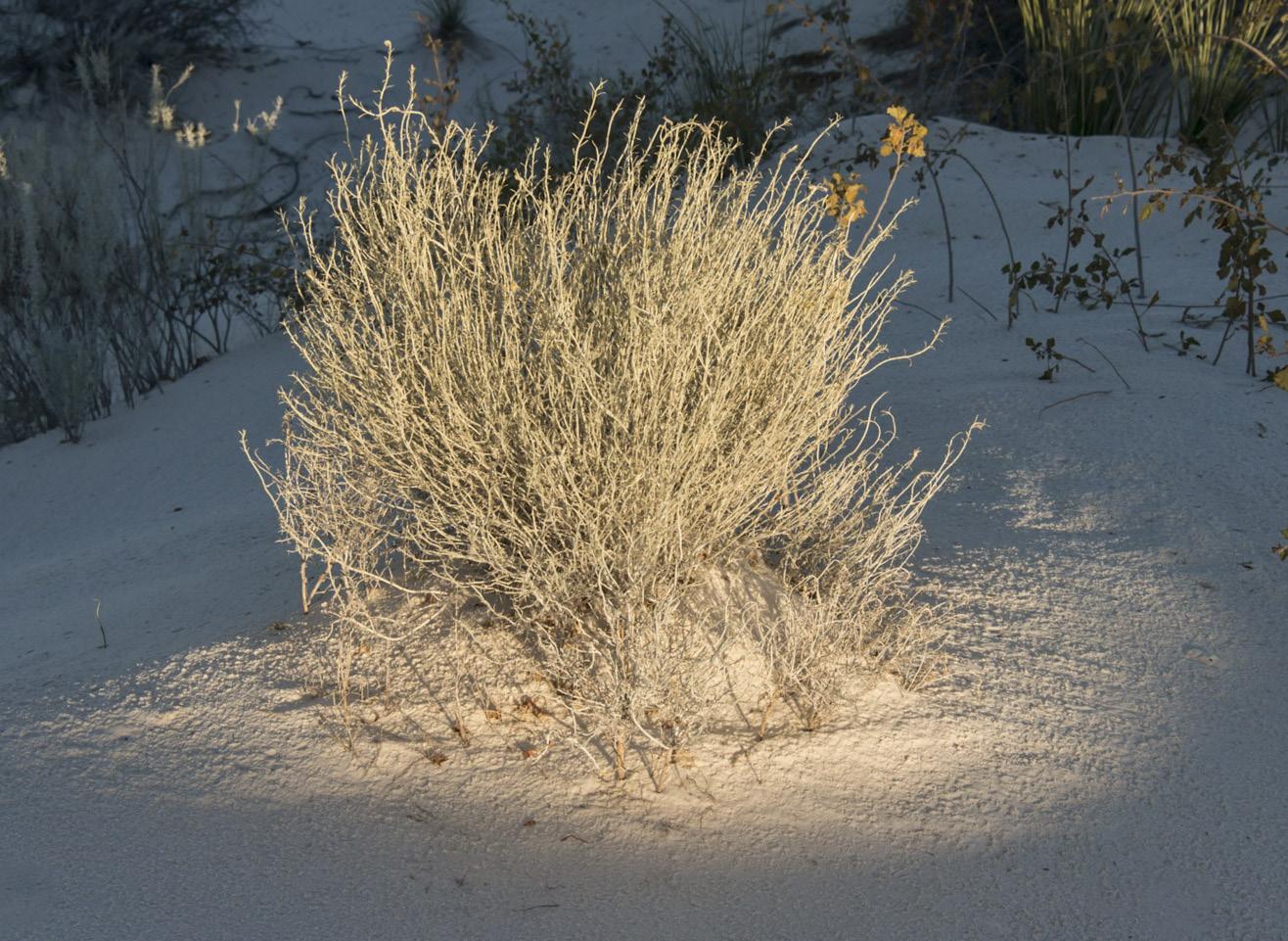
89 89
©2022 John
All Rights Reserved

Get out there and get involved!
Our natural world is under attack and we all need to fight to preserve the things that we hold dear.
CONTRIBUTE
YOUR TIME, YOUR DOLLARS.... OR BOTH!
Do you know anyone who would like to become a member of the Sierra Club Camera Committee?
We are seeking new members to share their outdoor experiences and photographs. If you have a friend or acquaintance whom you feel would benefit from and add to our membership, please ask them to join us at our next meeting.
Membership costs only $15.00 per year - a tremendous value!
To join or renew, please mail a check for $15 (payable to SCCC):
Joan Schipper - Membership 6100 Cashio St. Los Angeles, CA 90035
(Be sure to provide your address and email)
More members - More to share
91 91
The Members’ Choice Photo Contest
What’s your favorite photo in this Focal Points Magazine? Continuing with this issue I am asking all members to vote for their favorite photo. Here’s how:
1. Please e-mail me at dtlanow@gmail.com (Heading: Member’s Choice) and let me know your choice for the best photo by the 20th of the month in which the issue is published.
2. In your e-mail, give me the page number, the name of the photographer, and a brief description so I can identify your choice.
I will tally up the votes and announce the winner in the next issue and republish the photo with a paragraph from the photographer about how it was captured, where, when, and even the dreaded mire of camera, settings and lens.
This should be a fun feature!
..........John Nilsson, Publisher
Wanna Go on a Hike?
Just in case you didn’t realize it...........
The Angeles Chapter of the Sierra Club has literally hundreds of outdoor activities that Sierra Club Camera Committee members can attend.
You can find these activities at http://angeles.sierraclub.org/activities
CST 2087766-40. Registration as a seller of travel does not constitute approval by the State of California. All participants on Sierra Club outings are required to sign a standard liability waiver. To read the liability waiver before you participate on an outing, go to: http://www.sierraclub.org/outings/chapter/forms
92
If you have an idea for a trip that the Camera Committee might like to plan for, tell a leader. They are always open to ideas of new places to go, new places to shoot. See the last page of this newsletter for a list of contact information for the leaders.

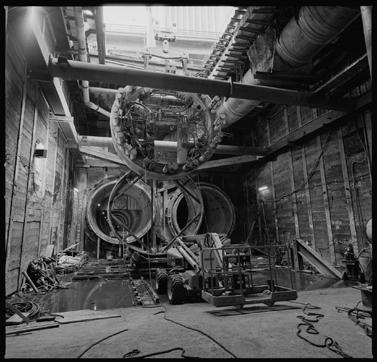

93 Do you enjoy receiving your monthly copy of Focal Points Magazine, as well as full membership to the Sierra Club Camera Committtee and access to our extensive programming and trips? If your answer is "Yes" and you want to continue receiving Focal Points Magazine, please send your check for $15.00 and your full name and email address for a yearly subscription to: Sierra Club Camera Committee Joan Schipper - Membership 6100 Cashio St. Los Angeles, CA 90035 JoanSchipper@ixnetcom.com 323-828-8334 93 Focal Points Sierra Club Camera Committee Magazine January 2021 Focal Points Sierra Club Camera Committee Magazine December, 2020 Focal Points Angeles Chapter Camera Committee Magazine November 2020
Photo of the Month
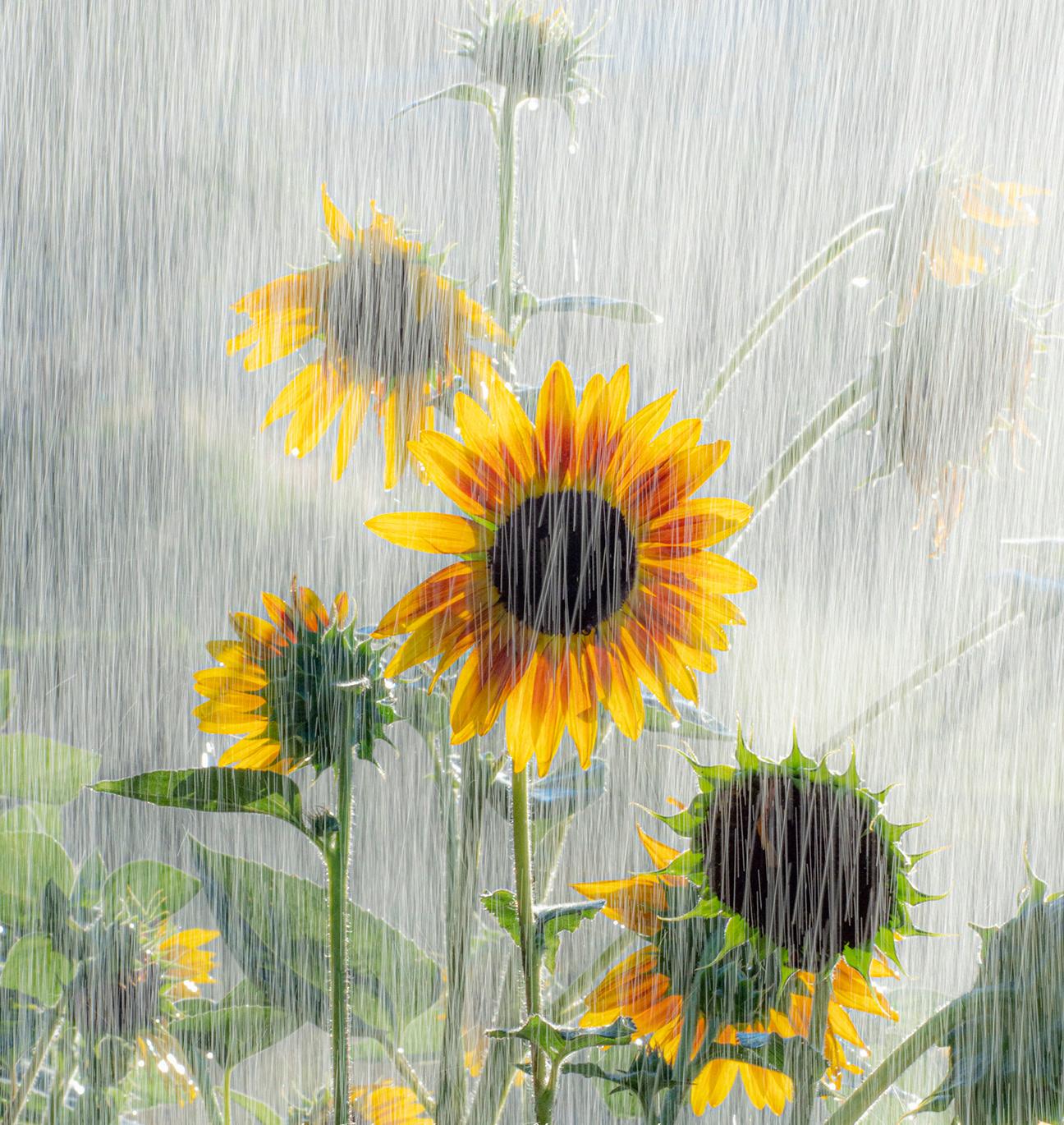
John
94
94
Clement Monsoon Showers Olympus E-M1Mark II Olympus M40-150 f/2.8 @150 ISO200 ©2022 John Clement, All Right Reserved
The Parting Shot
Just a flick of a finger..
Billboard Painter Downtown Los Angeles
©2022 John Nilsson, All Rights Reserved

95 95
Leader Contacts
Chair Joe Doherty
Information.SCCC@gmail.com
310-500-5696
Programs Susan Manley 323-901-7788
SSNManley@yahoo.com
Treasurer Ed Ogawa Ed5ogawa@angeles.sierraclub.org
Membership Joan Schipper*
JoanSchipper@ixnetcom.com
323-828-8334
Publications- John Nilsson* 213-266-2224 Editor + Liaison FocalPoints.SCCC@gmail.com
Communications Velda Ruddock
VRuddock.SCCC@gmail.com
Website Velda Ruddock
Meetup Ed Ogawa
Instagram Joan Schipper
Facebook Open
310-500-5995
Outings co-chairs Joan Schipper* 323-828-8334 joanschipper@ixnetcom.com
Alison Boyle* 310-944-1019 AlisoniBoyle@icloud.com
Trip Leaders-
* Above and the following: Steve Anderson 714-614-7808 SAndersonImagery@outlook.com
John Boyle 310-828-6300
JBoyle6300@gmail.com
Carole Scurlock 626-794-5207
CScurlock@charter.net
Allan Der 714-653-8319 ader@sprynet.com
96
96

